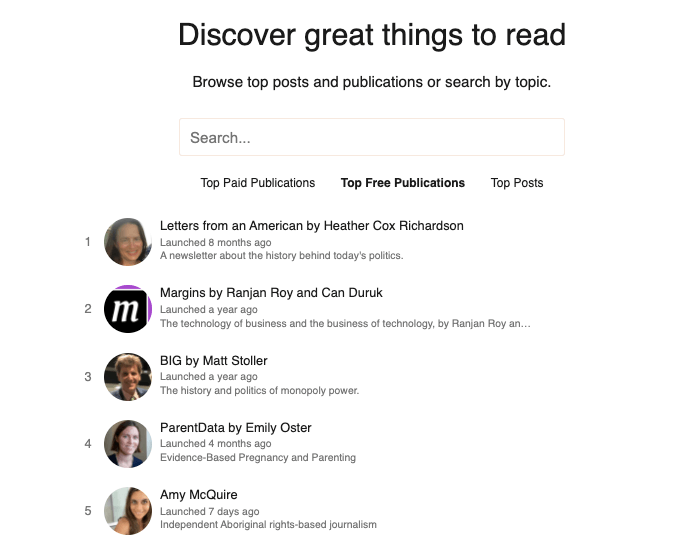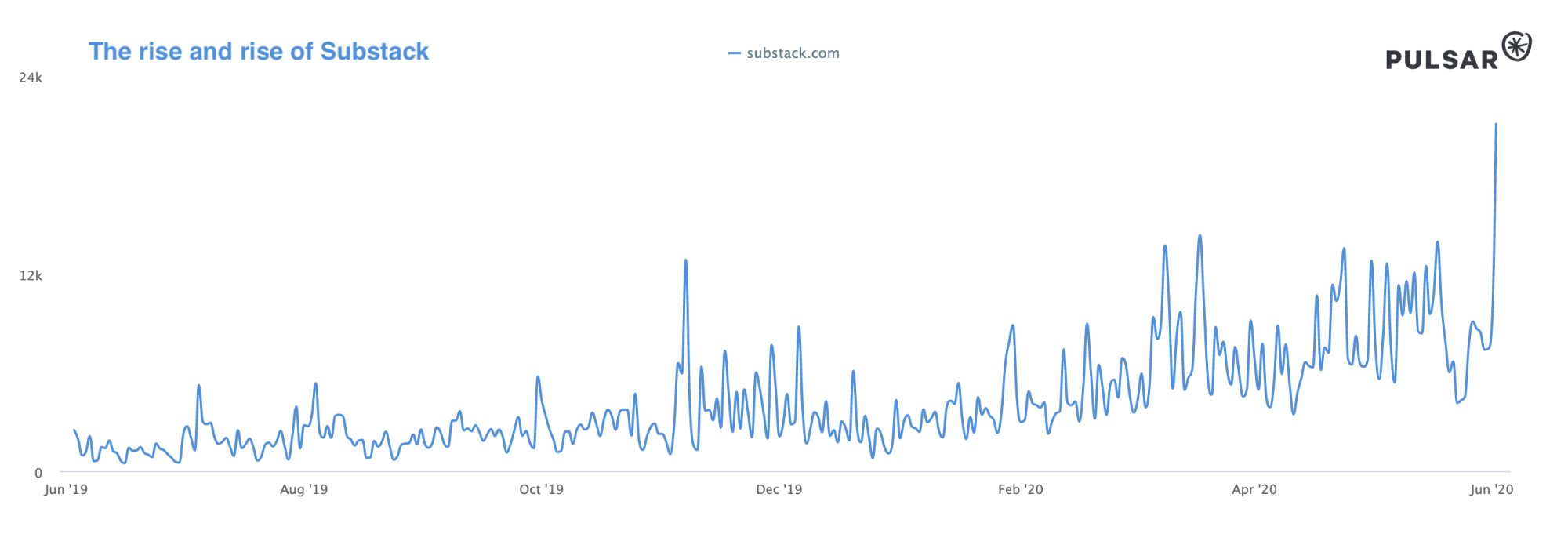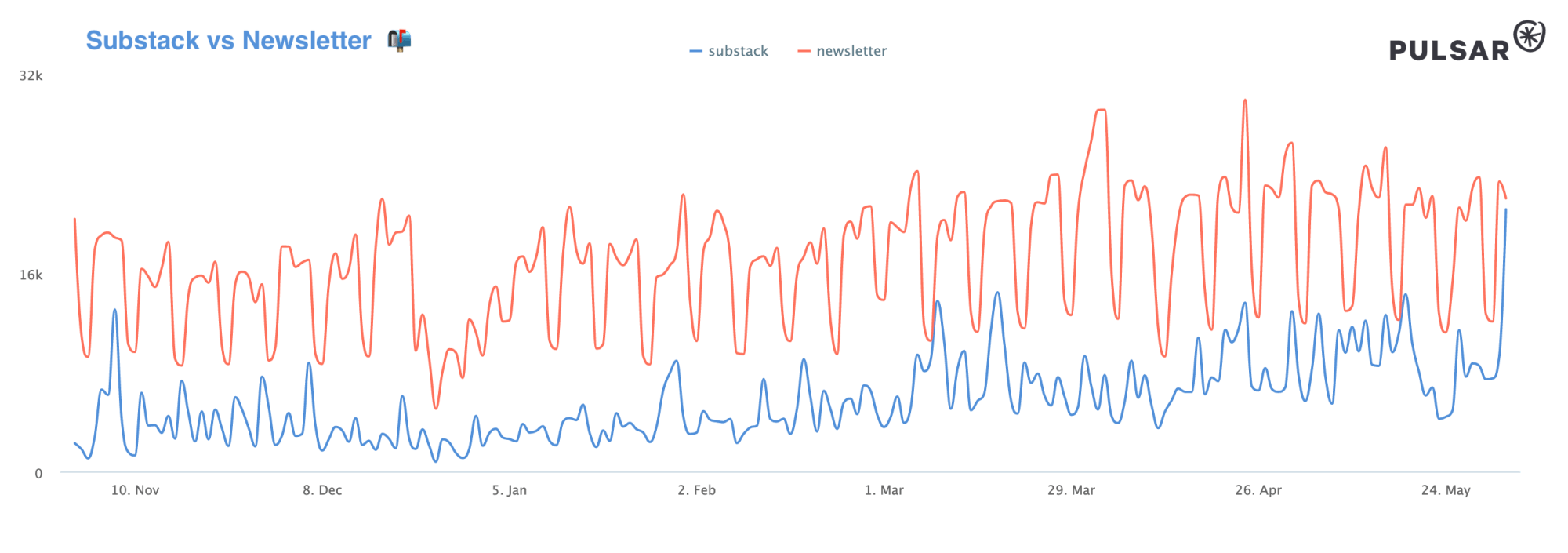How Substack took over newsletters
Newsletter platform Substack has been growing for a few years now, but over the past few months it has broken through to a new level, consistently racking up more than 10k mentions per day on Twitter, and touching peaks of more than 20k in the past few days.
So what makes Substack so popular?
- easy to share content
- easy to write and compose
- easy to build an audience
- easy to share on social media
- many writers looking for an audience
- easy to discover writers, and be discovered
Let's dive into each one of these. The graph above shows the number of links shared that redirect to substack.com. Those tend to be people promoting their newsletter with a subscribe link or, more often, individual emails, which the platform turns into Medium-like articles that can be shared on social media (unlike most email content, which tends to never leave people's inboxes).
In terms of simplicity, the platform offers a simple and intuitive way to compose and distribute email newsletters and, most importantly, allows writers to charge for email with yearly or monthly subscriptions.
By turning the humble but increasingly popular newsletter into a proper platform for premium social content, Substack became a key component of the subscription and passion economy stack, alongside platforms like Patreon, Onlyfans and Teachable.
But how do we know it's actually hitting the big time? Well, on Twitter, daily mentions of Substack are about to overtake those of its entire category, 'newsletter.'
Another part of its success lies in how easy it makes it for writers to build audiences, and for audiences to discover new writers.
The platform makes these kinds of discoveries straightforward, thanks to its prominent dashboard ranking the most popular paid newsletters, free newsletters, and most popular articles.

Substack powerusers are people whose job requires them to build audiences: journalists, activists, analysts, academics, and investors. Most of them have already been burned in trying to build audiences on social media, only to then see their organic reach shrink after an algorithm update. And while emails also fall prey to the algorithm (promotions tab anyone?) it helps to cultivate a more direct relationship with the reader.
Finally, as a consequence of the string of layoffs that plagued newsrooms during the economic recession that has followed COVID-19, many reporters and editors have flocked to the platform as a way to carry their loyal readership over to their own publication.




